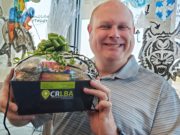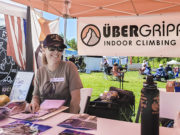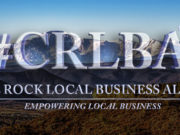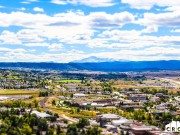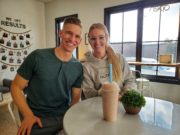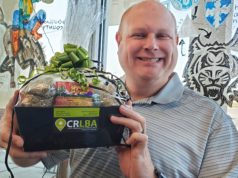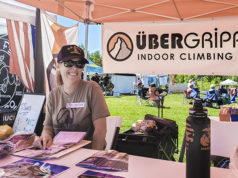It isn’t often that a person has the chance to witness a miracle in their lifetime. However, many would say, at Promise Ranch, in Franktown, Colorado, miracles – small and large – happen almost daily.
In 2009, the timing was right to create a safe place for those with challenges to experience the benefits of connecting with horses. It would be a ranch dedicated to helping individuals with disabilities, of all ages, where they could engage in equine assisted activities and therapies.

With a single instructor, a few students and a couple of helping hands, the program finally got its start. However, it wasn’t until a year later, that things began to gain some momentum. The timing was also right for Carol Crisp, a former lead instructor at Praying Hands Ranch, to be driving through the neighborhood.
“I remember driving by and I saw the sign (for Promise Ranch Therapeutic Riding) and decided to stop in,” she remembers. After a short conversation, she came to find out that a few of her previous students were now at Promise Ranch, participating in equine therapy. “Two of my former students, who had been children at the time, were now adults riding here,” she said.
That’s when Crisp realized that it was not by chance that she stopped in that day, she needed to return to what she was called to do. “So I came out of my hiatus, took some refresher courses and for the first couple of years, started riding (at Promise Ranch) with only a handful of students,” smiled Crisp, who now serves the ranch’s lead instructor.

As months passed passed, another welcomed spike in interest came. Realizing they needed more space to accommodate the surge of new students, instructors and therapists, the team knew a decision was paramount. “Until last year, we were still on the founders personal ranch,” Crisp noted. “Suddenly, with more people and horses, we quickly realized we had outgrown that facility.”
After contemplating relocation, they approached Castlewood Equestrian Center to see if they might be able to convince the new owners about a possible partnership. “We negotiated a deal to lease the property,” Crisp said. “As part of the deal, we inherited some boarded horses to keep alongside our therapy horses.” In total, their new location would have 15 horses; ten of which were purposed for therapy use.
Riding Proud
The therapeutic riding horses on the ranch are known by names like Paradise, Bukka, Cinnamon and Knickee. Because they each have different personalities, and depending on client’s level of impairment, each rider is paired with a fitting horse. Sometimes it is Crisp or another instructor that chooses their therapy horse, sometimes it’s the client and sometimes the choice comes from the horse itself by a ‘nudge.’

Usually, the horse secured for the hour-long session is the lead mare at the ranch, Knickee. “We put most of our riders on her because she does it all,” said Crisp. “Knickee is confident and really does know her job as a therapy horse.”
No matter which horse is chosen, once they find the right fit, the bond and therapy can start to take shape. “Therapeutic riding is what I call adaptive writing; teaching individuals with disabilities, of whatever kind it might be – physical or mental – to learn how to ride a horse,” Crisp remarked.
To give the rider more control, sometimes the use of adaptive equipment is necessary. Having been a therapeutic horse instructor for sometime, Crisp is accustomed to having to tweak each lesson according each rider’s ability. “I had a student, named Adriana, who is paralyzed from the waist down. Usually legs are an important part of controlling your horse, so instead, she used her arms, her body weight and voice – she also used adaptive equipment to help her ride.”

Whatever the disability may be, where there’s a will, Crisp and the team at Promise Ranch will find a way; it just takes a little patience. “Based on what their abilities are, over time, our goal is to teach them how to control, ride and actually connect with the horse. It may go in very small increments or it may be amazing how much they can learn to do in a short amount of time.”
Along with horse therapy, Promise Ranch is stepping out to meet the needs of clients looking to engage in related therapies. More recently, they began offering Hippotherapy at their facility. It’s a treatment modality used by Occupational and Speech Therapists and Speech and Language Pathologists. With horse therapy, the rider controls the horse; Hippotherapy instead transforms the horse into a treatment tool for the rider to improving things like balance, motor control and activities of daily living.
Likewise, they have stemmed out to provide Horticultural Therapy and are currently in the early stages of developing an equine therapy program tailored towards disabled veterans. “We are looking to raise money for the ranch to buy a Hoyer Lift,” commented Mike Wheaton, Executive Director at Promise Ranch. “That way we can allow adult men and other larger riders to get on their horse with dignity.”

Because, at the end of the day, teaching, learning and fostering independence is what Promise Ranch hopes will give more people in the community a reason to enjoy life. “We’re not just horsing around here,” Wheaton boasted. “We have big plans on ways we will be able to benefit those who seek the services at our ranch for their entire lives.”
For the future, they have their eyes set on continuing to expand their services during their 6 days of operation, and down the road, incorporate employment, volunteer opportunities and housing for those living with disabilities. Crisp interjected, “There really is no limit to the things our horses and ranch can allow our clients to do.”
To donate or inquire about volunteer opportunities, click on:

